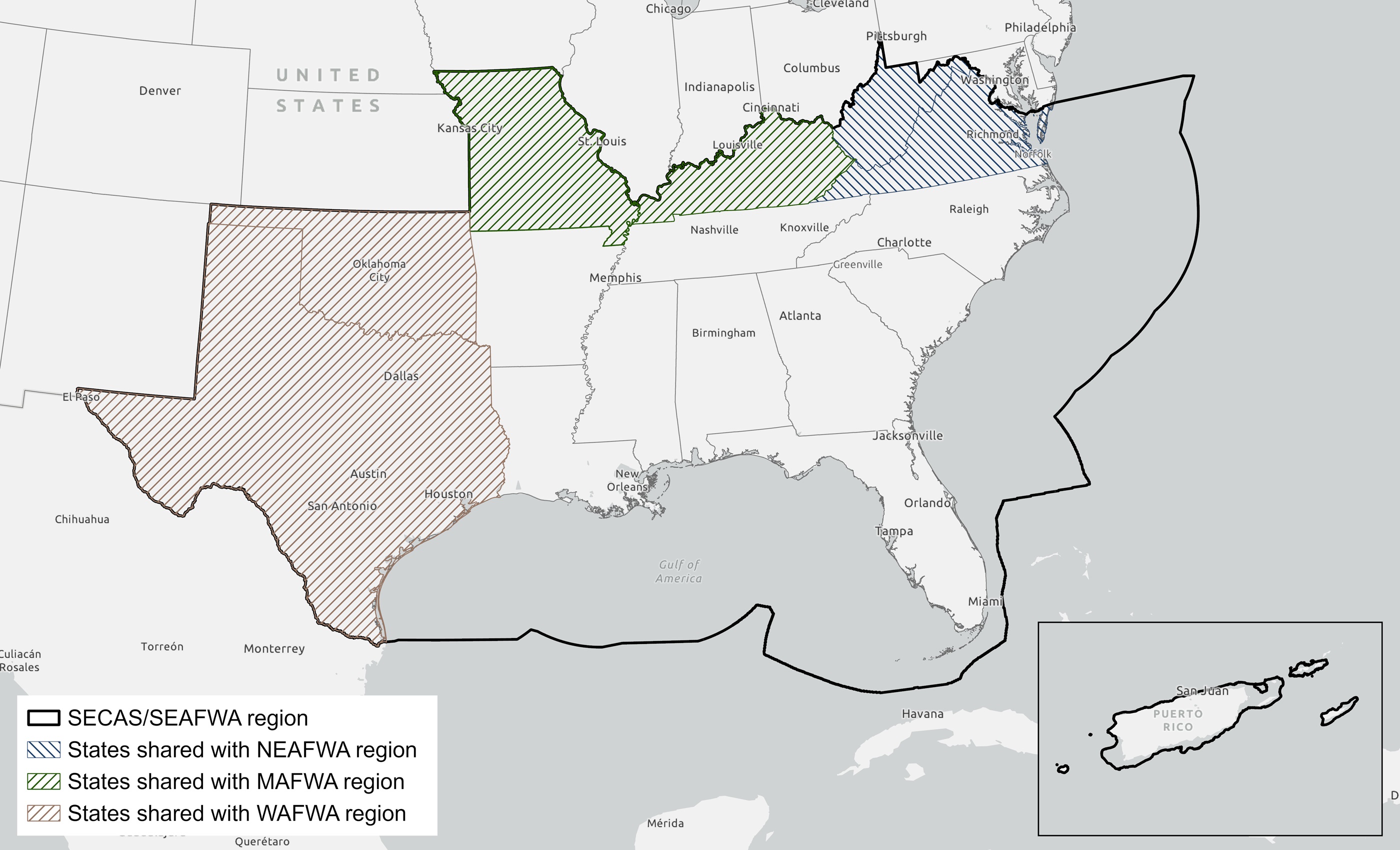Advancing cross-regional conservation at the North American Wildlife and Natural Resources Conference

Last month, conservation leaders from across the nation and representing broad sectors attended the 90th annual North American Wildlife and Natural Resources Conference in Louisville, KY. Hosted by the Wildlife Management Institute, this annual conference sets the stage for sharing visionary ideas about cross-collaborative conservation.
This year, SECAS staff worked closely with representatives from the Association of Fish and Wildlife Agencies (AFWA), the Wildlife Management Institute, and the Native American Fish and Wildlife Society (NAFWS) to plan a special session at the conference. Titled “Beyond the Boundaries: Exploring Opportunities for Cross-regional Landscape-scale Conservation”, the session delved into the potential for, and growing interest in, creating a unified national framework for collaborative conservation.
Across the nation, regional AFWAs are bringing together broad coalitions of partners working at various scales to achieve diverse, yet compatible, goals. Partnerships like the Midwest Landscape Initiative (MLI), the Southeast Conservation Adaptation Strategy (SECAS), the Northeast Landscape Wildlife Conservation Committee, and Western AFWA are achieving conservation wins for regional priorities through local engagement. As these partnerships gain momentum, there is strong interest in working across regions to share knowledge, work more efficiently, and support partners working along the regional boundaries.
Every AFWA region shares portions of its geography with neighboring regions. Many states fall within two AFWA regions–for example, KY and MO, which are shared by the Southeast and Midwest, and VA and WV, which are shared by the Southeast and Northeast. These shared geographies have led to conversations across the MLI, Northeast Landscape Wildlife Conservation Committee, and SECAS about how to better serve people working within these overlap areas or along the boundaries of regional conservation plans.
The special session provided a forum for regional initiatives to share how they are already integrating their work while maintaining their unique governance structures, conservation priorities, and decision-making processes. More importantly, the session also gave attendees and participants an opportunity to discuss if there is a need for, or interest in, pursuing exploring a national framework for collaborative conservation planning.
Session attendees were specifically asked to indicate if developing a unified cross-regional conservation framework was important, and to list the benefits and challenges of strengthening cross-regional conservation partnerships. All attendees who participated in the poll indicated a strong interest in further exploring a potential national framework, with benefits including improved efficiency and more effective outcomes for wildlife. Attendees also listed a lack of funding and different priorities as potential challenges. Interestingly, attendees listed capacity as both a challenge and a benefit of cross-boundary collaboration.
From here, the Landscape Conservation Joint Task Force (JTF), which serves as forum to enhance coordination between state and federal leadership, will work with partners to develop a workshop that brings together state and federal leadership, the governing bodies of the regional initiatives, and NAFWS to further explore interest in, and collect input to inform, a broader framework for landscape-scale conservation that not only aligns with national initiatives, but also preserves the autonomy and strengths of regional efforts. The date and location are yet to be determined, but SECAS staff will continue to provide support to the JTF.